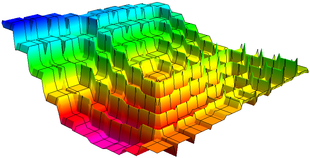10-327/Classnotes for Thursday November 4: Difference between revisions
From Drorbn
Jump to navigationJump to search
No edit summary |
No edit summary |
||
| Line 5: | Line 5: | ||
{{Template:10-327:Dror/Students Divider}} |
{{Template:10-327:Dror/Students Divider}} |
||
Question: Regarding the proof of the Lebesque Number Lemma, let T(x) be the function we were working with in the proof. I am confused with how we reached the conclusion that if d(x,y)<E, then T(y)>= T(x) - E. I know that it was said that this is just an application of the triangle inequality, but I am having a bit of trouble seeing that. Hopefully someone can make this point a bit clearer for me. Thanks! Jason. |
* Question: Regarding the proof of the Lebesque Number Lemma, let T(x) be the function we were working with in the proof. I am confused with how we reached the conclusion that if d(x,y)<E, then T(y)>= T(x) - E. I know that it was said that this is just an application of the triangle inequality, but I am having a bit of trouble seeing that. Hopefully someone can make this point a bit clearer for me. Thanks! Jason. |
||
** If you could find a ball of radius 7 around <math>x</math> which fits inside some set <math>U</math>, and you move <math>x</math> just a 1 unit away to <math>y</math>, then by the triangle inequality the ball of radius 6 around <math>y</math> is entirely contained inside the ball of radius 7 around <math>x</math> so it is entirely contained in <math>U</math>. [[User:Drorbn|Drorbn]] 18:37, 6 November 2010 (EDT) |
|||
Revision as of 17:37, 6 November 2010
| ||||||||||||||||||||||||||||||||||||||||||||||||||||||||||||
See some blackboard shots at BBS/10_327-101104-142342.jpg.
| Dror's notes above / Student's notes below |
- Question: Regarding the proof of the Lebesque Number Lemma, let T(x) be the function we were working with in the proof. I am confused with how we reached the conclusion that if d(x,y)<E, then T(y)>= T(x) - E. I know that it was said that this is just an application of the triangle inequality, but I am having a bit of trouble seeing that. Hopefully someone can make this point a bit clearer for me. Thanks! Jason.
- If you could find a ball of radius 7 around which fits inside some set , and you move just a 1 unit away to , then by the triangle inequality the ball of radius 6 around is entirely contained inside the ball of radius 7 around so it is entirely contained in . Drorbn 18:37, 6 November 2010 (EDT)

![{\displaystyle [0,1]}](https://wikimedia.org/api/rest_v1/media/math/render/svg/738f7d23bb2d9642bab520020873cccbef49768d)






